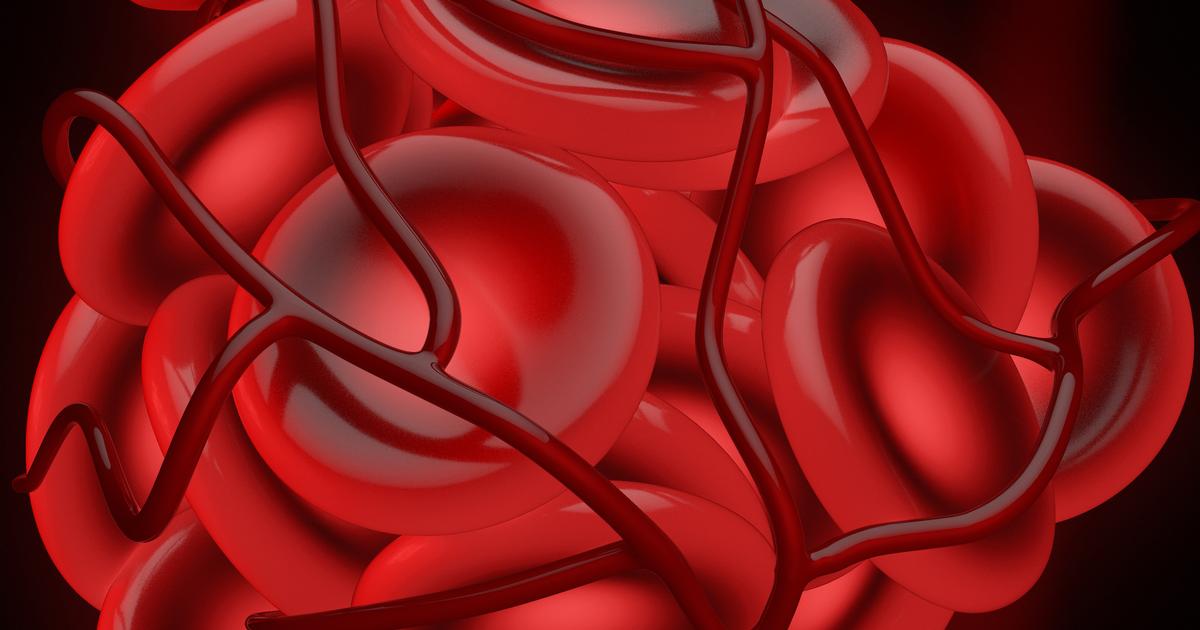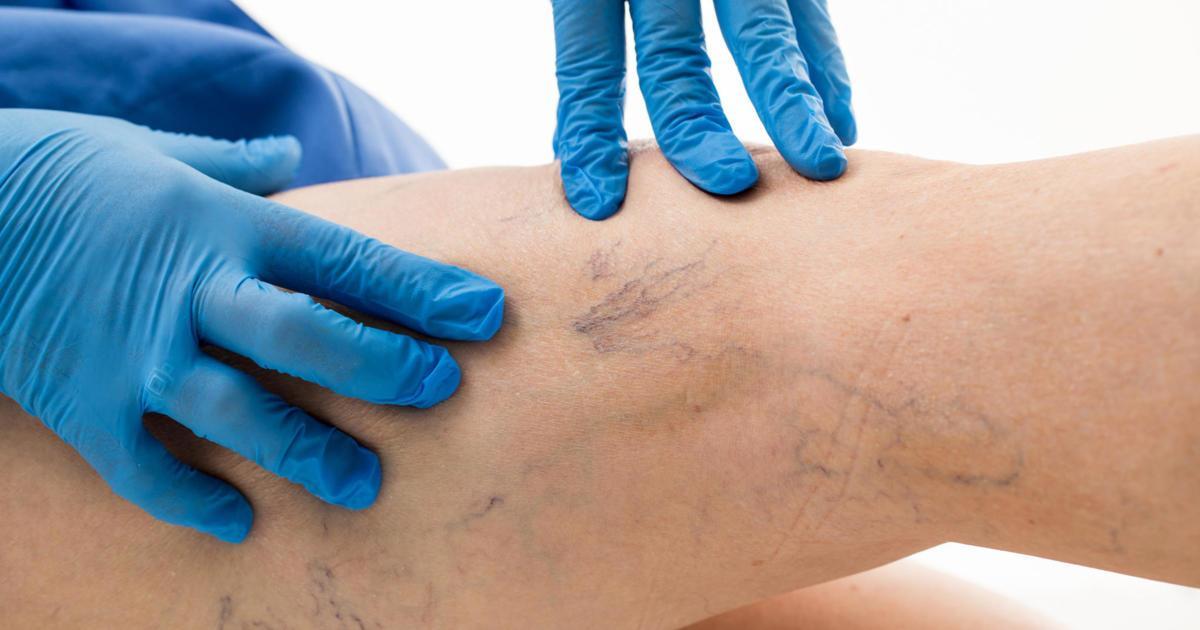Serious Causes Linked To Poor Circulation
The circulatory system pumps blood, oxygen, and nutrients around the body. Normal circulation can be impaired due to underlying medical conditions. Circulatory problems tend to be most apparent in the extremities. Individuals who have poor circulation may notice they have cold hands and feet, and numbness, tingling, or pain in the limbs could be present. Muscle cramps and a throbbing sensation might occur as well. If these symptoms are present, patients may wish to consult their primary care doctor for an examination to determine the underlying cause of the issues.
The doctor will check the joints and muscles for temperature, pain, and swelling, and they may also listen to the patient's heartbeat and breathing. Blood pressure measurements will be recorded, and the clinician might assess the patient's sensation. Blood tests will be performed to check glucose levels and to evaluate patients for Raynaud's disease and blood clots. Ultrasounds or CT scans may be required. To improve circulation, doctors may prescribe anticoagulants or calcium channel blockers for certain patients, and specific exercise programs might be suggested, too. Some patients find wearing compression stockings at home improves their overall circulation.
Blood Clots

Blood clots are gel-like clumps of blood that can reduce or completely block circulation. While they can form in any part of the body, they are especially common in the deep veins, where they may lead to a condition called deep vein thrombosis. Potential signs of blood clots include swelling, pain, and redness at or near the site of the clot, and patients who have clots in the chest or lungs could develop shortness of breath, chest pain, rapid heartbeat, and lightheadedness. Some patients might also cough up blood.
Individuals who believe they could have a blood clot should go to the nearest emergency room; clots are considered a medical emergency that can be life-threatening. CT scans and ultrasounds may be used to identify the location of a clot, and patients can be given intravenous drugs designed to dissolve the clots. Individuals who have had a blood clot will most likely need to take anticoagulants (blood thinners) to prevent future clots, and they will require long-term follow-up with a physician.
Diabetes

Diabetes is a condition in which the body cannot process glucose as it normally would, resulting in chronically elevated blood glucose readings. Symptoms of this condition include excessive thirst, increased urination, fatigue, blurry vision, and slow healing of cuts and sores. To diagnose diabetes, doctors perform several blood tests that provide information about glucose levels. If patients are diagnosed with diabetes, they will normally be treated by an endocrinologist.
Doctors recommend diabetes patients adopt diets that minimize fried foods, processed foods, and added sugars. Patients will need to check their blood sugar readings at least once a day, and they may need to take oral medications or injections to improve their blood sugar control as well. In addition, insulin injections are often necessary. Diabetes patients may wish to attend support groups in their area, and consulting with a nutritionist can help plan appropriate meals.
Peripheral Arterial Disease

Peripheral arterial disease occurs when arteries narrow and reduce blood flow to the lower limbs. Symptoms include leg pain while walking, leg cramps, shiny skin on the lower leg or foot, and a change in the color of the leg or foot. Patients might notice their legs or feet feel cold, and they could have a weak or absent pulse in their legs or feet. Peripheral arterial disease may be a sign of atherosclerosis, an abnormal accumulation of fatty deposits in the arteries that can reduce circulation to the heart and brain.
To test for peripheral arterial disease, doctors will check for weak or absent pulses in several areas of the body, and they will also use a stethoscope to listen for abnormal sounds in certain arteries. Blood pressure measurements may be taken in both the arms and the ankles, and ultrasounds or angiograms might be needed. Treatment for peripheral arterial disease may include medications to lower blood pressure, blood glucose, and cholesterol, and patients might be prescribed a supervised program of exercise. Surgical interventions may be beneficial for some patients with this condition.
Raynaud's Disease

Raynaud's disease reduces circulation in the hands and feet, and the syndrome is most common in women and in those who live in cold climates. Patients with Raynaud's disease usually experience color changes in their hands and feet in response to cold or stress, and they may also have numbness and tingling. These symptoms normally come in episodes that may last for several minutes. After the patient has warmed up or resolved a stressful situation, it can take roughly fifteen minutes for normal circulation to return.
To diagnose Raynaud's disease, doctors may examine the patient's nails under a magnifying glass to check for deformities in the capillaries. Blood tests could be needed to determine whether the patient's symptoms are caused by an underlying autoimmune disease or not. To treat this syndrome, doctors may prescribe vasodilators and calcium channel blockers, and some patients find exercise, stress management, and avoidance of rapidly changing temperatures all help improve their symptoms.
Varicose Veins

Varicose veins develop when veins become dilated and enlarged, and they are most common in the lower legs. Patients with varicose veins may experience pain in the affected areas, and the veins might also appear swollen and elevated above the skin's surface. To diagnose vein issues, doctors perform an ultrasound to assess the circulation in particular veins. Sometimes, a venogram (a series of x-rays with contrast) might be required to provide additional information about the health of the veins.
Conservative treatment is normally preferred for varicose veins, and physicians recommend patients avoid standing for long periods. Wearing compression socks, maintaining a healthy weight, and getting sufficient exercise may be beneficial, and these steps could prevent the formation of new varicose veins. Laser surgery, vein stripping, and endovenous ablation therapy might be considered if conservative treatments are ineffective.
Obesity

Under current guidelines, doctors consider an individual obese if they have a body mass index (BMI) of thirty or above. Body mass index is a calculation that considers the patient's weight in relation to their height. Although the body mass index has some limitations, it is considered a reasonable estimate of body fat levels and can be a useful guideline for determining the amount of weight someone may need to lose. Some physicians may also measure a patient's waist circumference and body fat percentage to get a more complete picture of their overall health status. Generally, a body fat percentage of forty or higher is considered obese for women, and men with a body fat percentage of thirty or higher are also classified as obese.
Patients dealing with obesity often struggle with poor circulation, and they are at an increased risk of complications such as heart disease, sleep apnea, type 2 diabetes, heartburn, gallbladder disease, liver issues, and high blood pressure. Treatment options for obesity generally focus on diet and exercise modifications. Patients may benefit from following a calorie-controlled diet, and physicians suggest they avoid fast food, processed foods, and fried foods. Cooking at home and basing meals around fruits, vegetables, and whole grains may help, and patients can ask their healthcare provider for a referral to a nutritionist if they need support with their diet and healthy meal planning. Patients with severe obesity may be considered for bariatric surgery or prescription weight loss medication.
Atherosclerosis

Atherosclerosis is a condition that causes plaque accumulation in the arteries. This contributes to a narrowing of the arteries that reduces blood flow. In the initial stages of atherosclerosis, most patients do not have symptoms. Symptoms generally begin in middle age, and they vary depending on which arteries are affected. When the coronary arteries are affected, patients could experience shortness of breath, angina, and heart rhythm irregularities. These may be symptoms of ischemic heart disease, one of the major complications associated with atherosclerosis. If the carotid arteries become narrowed as a result of atherosclerosis, patients are at risk of a stroke. Stroke symptoms include sudden weakness or paralysis on one side of the body, trouble speaking or understanding speech, loss of coordination, breathing problems, and a sudden, severe headache.
When atherosclerosis leads to plaque accumulation in the peripheral arteries, patients could notice numbness or pain in their arms or legs. Many patients with atherosclerosis do not know they have it until they experience a medical emergency such as a heart attack or a stroke. Patients with high blood pressure, obesity, diabetes, or high cholesterol, may be given medication to control these risk factors. Treatment methods for atherosclerosis focus on weight loss and other lifestyle changes, and doctors may prescribe medications to reduce the patient's blood glucose and blood pressure and prevent blood clots. Patients with severe atherosclerosis might need to have surgical intervention such as a coronary artery bypass procedure.
Smoking

Individuals who smoke tend to have reduced circulation, and they are at an increased risk of heart disease, lung cancer, and stroke compared to non-smokers. Smoking makes blood vessels thicker, and it causes the inside of the blood vessels to narrow. As a result, smokers typically have increases in blood pressure and heart rate. Smokers have a thirty to forty percent higher chance of getting type two diabetes compared to non-smokers, and they are more likely to develop rheumatoid arthritis and cataracts as well.
In general, smoking increases inflammation throughout the body and reduces the function of the immune system. Due to the significant health risks associated with smoking, patients are advised to quit smoking to improve their health. Since it can be difficult to quit smoking without support, patients should ask their healthcare provider about resources to help. Prescription and over-the-counter medicines are available, and patients might be able to attend a local smoking cessation class or support group too.
Low Blood Pressure

Low blood pressure is defined as a measurement of less than 90/60 mmHg. Patients with low blood pressure could experience dizziness, and some individuals may faint. Fatigue, nausea, blurred vision, lightheadedness, and lack of concentration could occur as well. Many medical conditions can lead to low blood pressure. For example, patients with heart valve issues, heart failure, and bradycardia could experience this symptom, and it also occurs in individuals having a heart attack.
Thyroid conditions, pregnancy, allergic reactions, severe infections, blood loss, and deficiencies in vitamin B12 or folate can all trigger low blood pressure, and it is a side effect of some types of diuretics, antidepressants, and beta-blockers. To diagnose low blood pressure, doctors may recommend that patients have blood tests, an echocardiogram, electrocardiogram, stress test, or tilt table test. Treatment for low blood pressure frequently includes medications such as midodrine or fludrocortisone, and patients are encouraged to increase their fluid and salt intake.
Dehydration

Dehydration develops when a patient uses more fluid than they consume. As a result, the body does not have enough of the water and other fluids it requires for normal functioning. In adults, symptoms of dehydration generally include fatigue, dizziness, confusion, and extreme thirst. Dehydrated patients will usually have dark yellow urine and they will urinate much less frequently than what is normal for them. Dehydration can develop due to diarrhea and vomiting, and it might also occur as a result of excessive sweating, fever, or increased urination.
It sometimes develops if individuals fail to drink enough water due to busy lifestyles, travel, or illness. To treat dehydration, patients may want to start with an oral rehydration solution. Severely dehydrated individuals typically need to receive intravenous fluids in the hospital. If left untreated, dehydration can be a medical emergency, and it may trigger seizures, low blood volume, urinary tract infections, kidney stones, heat cramps, or heatstroke.
